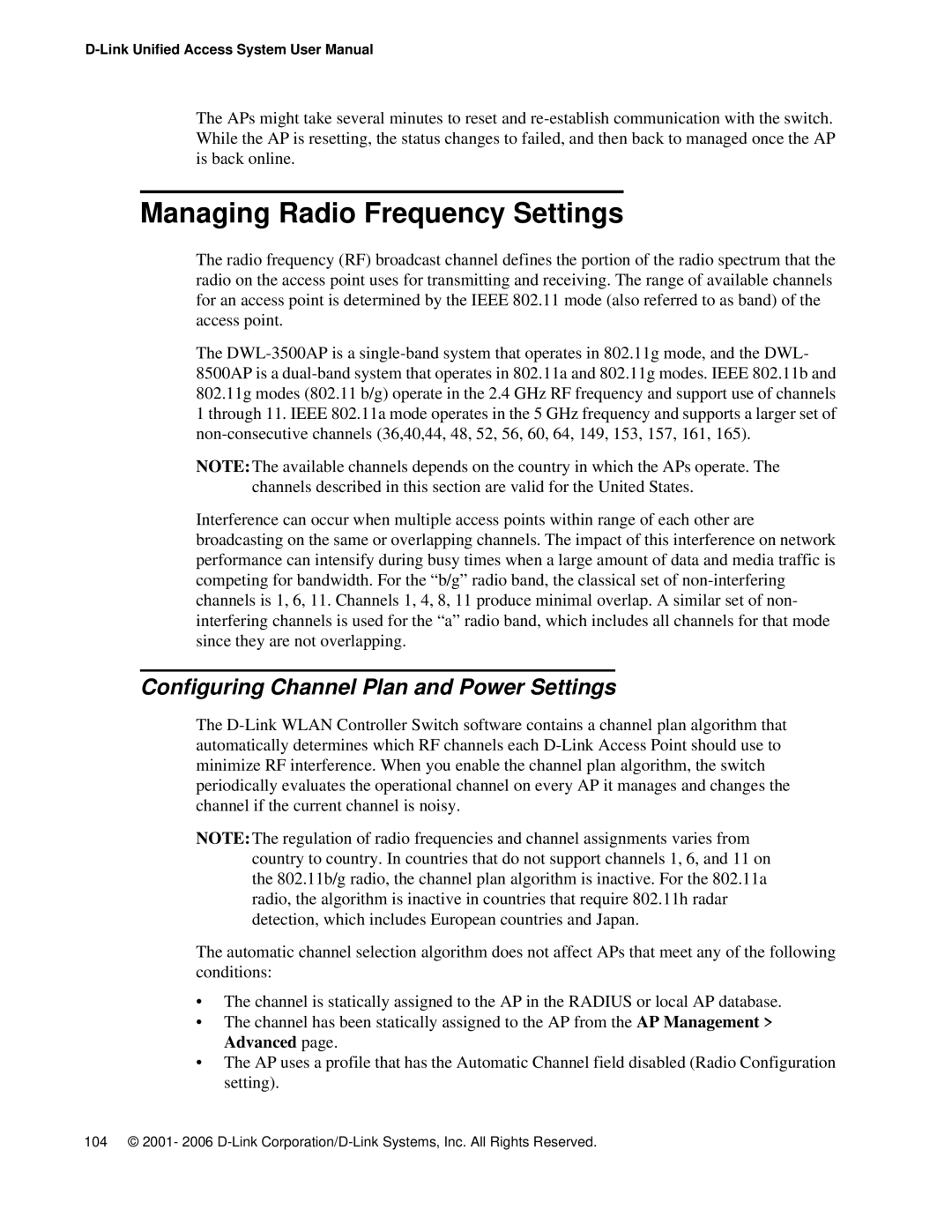
The APs might take several minutes to reset and
Managing Radio Frequency Settings
The radio frequency (RF) broadcast channel defines the portion of the radio spectrum that the radio on the access point uses for transmitting and receiving. The range of available channels for an access point is determined by the IEEE 802.11 mode (also referred to as band) of the access point.
The
NOTE:The available channels depends on the country in which the APs operate. The channels described in this section are valid for the United States.
Interference can occur when multiple access points within range of each other are broadcasting on the same or overlapping channels. The impact of this interference on network performance can intensify during busy times when a large amount of data and media traffic is competing for bandwidth. For the “b/g” radio band, the classical set of
Configuring Channel Plan and Power Settings
The
NOTE:The regulation of radio frequencies and channel assignments varies from country to country. In countries that do not support channels 1, 6, and 11 on the 802.11b/g radio, the channel plan algorithm is inactive. For the 802.11a radio, the algorithm is inactive in countries that require 802.11h radar detection, which includes European countries and Japan.
The automatic channel selection algorithm does not affect APs that meet any of the following conditions:
•The channel is statically assigned to the AP in the RADIUS or local AP database.
•The channel has been statically assigned to the AP from the AP Management > Advanced page.
•The AP uses a profile that has the Automatic Channel field disabled (Radio Configuration setting).
104 © 2001- 2006
